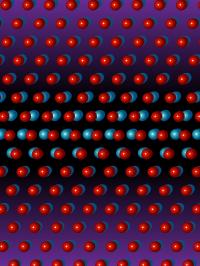Science
Inorganic materials display massive and instantaneous swelling and shrinkage

Macroscopic volume and microscopy characterization of the samples before and after swelling. The parent H0.8[Ti1.2Fe0.8]O4 H2O microcrystals exhibit platelets with lateral sizes of ~15 mm×35 mm and a thickness of ~2-3 mm. The interlayer spacing is 0.89 nm; thus, the platelets are composed of ~3000 regularly stacked layers. With addition of amine solutions, the samples “ballooned” spontaneously, and the macroscopic volume of the swollen crystals changes with various DMAE solutions, which shows the maximum volume increase at DMAE/H+ = 0.5. Optical microscopy characterizations reveal extended lamellar structures. The longest swollen length is ~200-250 mm in DMAE/H+ = 0.5. At high concentrations, the swelling is somewhat suppressed, with swollen length of ~100 mm at DMAE/H+ = 10.
- Read more
- 362 reads
Modified Natural Nano Biopolymers Utilized to Remove Dye from Textile Wastewater

- Read more
- 360 reads
Biological transistor enables computing within living cells, Stanford study says
And now a team of Stanford University bioengineers has taken computing beyond mechanics and electronics into the living realm of biology. In a paper to be published March 28 in Science, the team details a biological transistor made from genetic material — DNA and RNA — in place of gears or electrons. The team calls its biological transistor the "transcriptor."
- Read more
- 332 reads
Modified Natural Nano Biopolymers Utilized to Remove Dye from Textile Wastewater

- Read more
- 379 reads
Landforms on Mars

This image was taken by the High Resolution Imaging Science Experiment (HiRISE) flying onboard the Mars Reconnaissance Orbiter mission.
- Read more
- 369 reads
Iranian Scientists Use Nanotechnology for Waterproofing Building Materials

- Read more
- 435 reads
End of the Road for Roadrunner: Once the World’s Fastest Supercomputer; Central to the Success of Stockpile Stewardship

- Read more
- 476 reads
Hubble observes the hidden depths of Messier 77

- Read more
- 321 reads
Imaging methodology reveals nano details not seen before: Understanding nanoparticles at atomic scale in 3 dimensions could improve materials

This is a graphic representation of a 3-D atomic resolution screw dislocation in a platinum nanoparticle.
- Read more
- 537 reads
Human Rights
Fostering a More Humane World: The 28th Eurasian Economic Summi

Conscience, Hope, and Action: Keys to Global Peace and Sustainability

Ringing FOWPAL’s Peace Bell for the World:Nobel Peace Prize Laureates’ Visions and Actions

Protecting the World’s Cultural Diversity for a Sustainable Future

Puppet Show I International Friendship Day 2020


